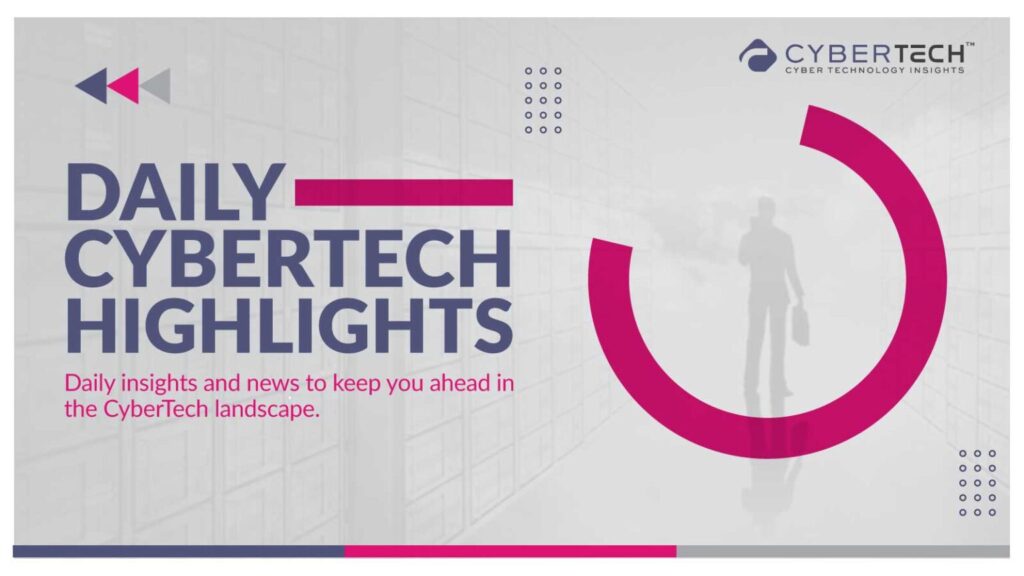Network security threats of AI have put the Chief Information Officers (CIOs) under immense pressure. CIOs face unprecedented challenges in optimizing their IT infrastructure due to the convergence of networking and security, exposing the enterprise cloud infrastructure to modern-day AI-driven threats. Network security threats of AI exploit the unguarded infrastructures used in hybrid work. Even for bandwidth-intensive applications that demand complex solutions, these threats remain invincible.
Ready to level up your IT security career? Discover the SSCP with ISC2. Your path to global recognition starts here. Get Your FREE Copy Today! CLICK HERE
Are CIOs Ready: The Convergence of Networking, Security and AI
In the rapidly evolving landscape of technology, Artificial Intelligence (AI) has undoubtedly taken center stage. However, a new research report by Extreme Networks, titled “CIO Insights Report: Priorities and Investment Plans in the Era of Platformization,” reveals a different reality. While AI has captured the imagination of many, the top priority for most CIOs and senior IT leaders remains firmly rooted in the convergence of networking and security. But, can AI replace humans completely from SecOps teams?
ISC2’s latest insight identified the pitfalls of completely relying on AI to replace human CISOs. For example, AI-driven recommendations could supersede human-led decisions and impact short and long-term business strategies.
According to the latest survey, Extreme Networks revealed that network security is a top priority for CIOs. 34% of respondents identified securing the network as their number one priority, underscoring the critical importance of this issue. Additionally, 22% of respondents ranked integrating networking and security as their second biggest priority, highlighting the need for a holistic approach to network protection.
CIOs Prioritize Network Security, Integration, and AI in 2024
Extreme Networks revealed the top priorities for Chief Information Officers (CIOs) in the second half of 2024. The survey, which polled 200 CIOs and senior IT leaders across various industries, found that network security emerged as the most pressing concern, followed by integrating network and security and evaluating and deploying AI across the organization.
Top CyberTech Insights and News: Hammerspace and Parallel Works Launch Unified Orchestration Tool
At the time of this announcement, Nabil Bukhari, Chief Product and Technology Officer and GM
of Subscription Business, Extreme Networks said, “In an era where AI, security and networking are increasingly intertwined, CIOs and IT leaders face a clear mandate: they need to prioritize investments that unify components and capabilities for their teams. This is another reason for the trend toward platformization and the increasing desire to integrate solutions into a single platform that is easy to use and deploy, is fully assembled and integrated out of the box and delivers exponential value through the continuous addition of new embedded capabilities and applications.”
Nabil added, “Organizations that embrace the network as the foundation of their platformization strategy have the unprecedented opportunity to harness AI and security to deliver significant value to the rest of their organization.”
CyberTech Leadership Dossier: AuthenticID Wins 2024 Fraud Prevention Solution Provider Award
The increasing complexity of modern networks, coupled with the growing threat of cyberattacks, has made network security a top priority for CIOs. By integrating network and security functions, organizations can gain better visibility into their networks, identify vulnerabilities more effectively, and respond to threats in a timely manner.
Survey Highlights
The increasing complexity of modern networks, coupled with the rise of sophisticated cyber threats, has made it imperative for CIOs to adopt a proactive and integrated approach to network security. By combining network and security functions, organizations can gain better visibility into their networks, identify potential vulnerabilities more effectively, and respond to threats in a timely manner.
- 57% ranked protecting the network against potential threats as one of their top three challenges.
- 55% of respondents said built-in security was one of their top three requirements when selecting a networking vendor.
- 96% agree the network is the foundation of a robust cybersecurity and risk management strategy – making it clear that point security solutions bolted on as an afterthought are not ideal.
AI Implementation: Overcoming the Hurdles
In a recent CyberTech Top Voice Interview Series, Fortra’s John P. Grancarich had explained the role of AI in the industry. John had said, “One of the biggest opportunities I see is what I think of the augmented security analyst. Rather than trying to create what some are calling an autonomous SOC, I think it makes a lot more sense to amplify what a skilled analyst can do by an order of magnitude, think 10-20x what they’re capable of today. To do that, we need to look at what they’re doing now and look for the patterns.”
Top-read Article: 5 Ways AI Capabilities Help in Strengthening Risk Management
Despite the widespread recognition of the transformative potential of AI, many organizations are still grappling with the challenges of implementing this technology effectively. The survey reveals that while 84% of respondents have begun integrating AI into their tech stack, several significant barriers persist.
One of the most pressing concerns is network bandwidth.
As AI applications often require substantial data processing and transfer, organizations may find their existing network infrastructure inadequate. 49% of respondents reported facing network bandwidth challenges during their AI implementation journey.
Another obstacle is employee readiness.
30% of respondents indicated a lack of proper guidance and training for their employees. Ensuring that the workforce is equipped with the necessary skills and knowledge to leverage AI effectively is crucial for successful implementation.
Security remains a top priority for organizations, and 40% of respondents identified data security as their biggest concern with AI. Protecting sensitive data from unauthorized access and breaches is paramount, especially as AI systems handle increasingly valuable information.
Despite these hurdles, organizations that have successfully implemented AI are reaping the rewards. However, 32% of respondents admitted to not yet seeing a significant return on investment (ROI) or efficiency improvements. This highlights the importance of careful planning, strategic implementation, and ongoing optimization to maximize the benefits of AI.
Some examples of how CIOs are integrating networking and security include:
- Deploying advanced threat detection and prevention solutions: These solutions use AI and machine learning to identify and block malicious attacks before they can cause damage.
- Implementing network access control (NAC) policies: NAC helps to ensure that only authorized devices and users can access the network, reducing the risk of unauthorized access.
- Enhancing network segmentation: By dividing the network into smaller, more manageable segments, organizations can limit the spread of malware and other threats.
- Regularly conducting security audits and vulnerability assessments: These assessments help to identify and address potential weaknesses in the network infrastructure.
By prioritizing the integration of networking and security, CIOs can help to protect their organizations from the growing threat of cyberattacks and ensure the continued success of their digital initiatives.
The survey also highlights the growing interest in AI among IT leaders.
As AI continues to transform various industries, CIOs are eager to explore the potential benefits of this technology for their organizations. However, the successful deployment of AI requires a robust and integrated IT infrastructure.
The survey findings underscore the growing demand for platformization in the IT industry.
88% of respondents expressed a desire for a single, integrated platform that encompasses networking, AI, and security. This trend reflects the increasing complexity of IT environments and the need for streamlined management and operations.
The results demonstrate that CIOs are prioritizing network security, integration, and AI as they navigate the risks and opportunities of the digital age.
By investing in advanced networking solutions and embracing AI technologies, organizations can enhance their security posture, improve operational efficiency, and drive innovation.
Leaving Too Much to Manage and Mitigate when AI Threats Loom In
The explosion of AI-driven applications, coupled with the escalating threat of cybersecurity breaches and the increasing complexity of hybrid work environments, has created a perfect storm for IT infrastructure. Organizations across all industries are grappling with the tribulations of managing and securing increasingly complex networks.
The report underscores the critical role of networking in supporting the digital transformation journey. As businesses adopt AI-powered solutions, the demand for robust, reliable, and secure networks becomes even more paramount. Network infrastructure must be able to handle the increased bandwidth requirements, support the diverse range of devices and applications, and mitigate the risks posed by cyber threats.
Conclusion: How Cybertech Landscape Dynamics Impact Organizations in the Digital Age
CIOs and senior IT decision-makers are faced with the daunting task of balancing competing priorities, and every year, these tasks magnify exponentially. On one hand, the decision-makers have to check if they must invest in cutting-edge technologies to drive innovation and remain competitive. Or, should they focus on bandwidth-heavy applications to ensure that their networks are secure, resilient, and capable of supporting the growing demands of their businesses. Either way, the convergence of networking and security presents both challenges and opportunities.
As CIOs and senior IT leaders navigate this complex landscape, they must prioritize the convergence of networking and security. By doing so, they can position their organizations for success in the digital age.
Recommended CyberTech Interview: Fintech’s Digital Fortress Under Attack: Cybersecurity Challenges in 2025
To participate in our interviews, please write to our CyberTech Media Room at news@intentamplify.com






